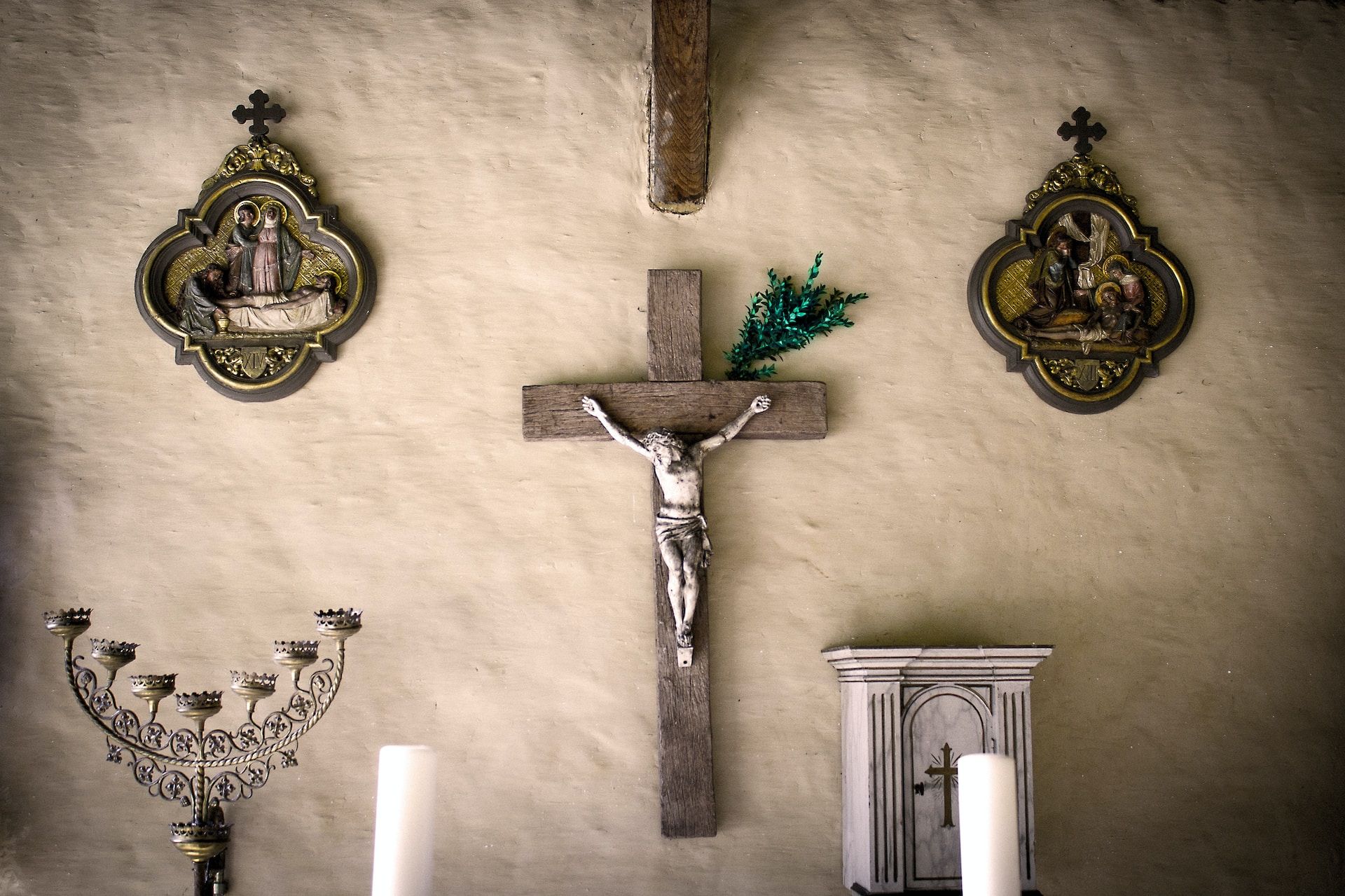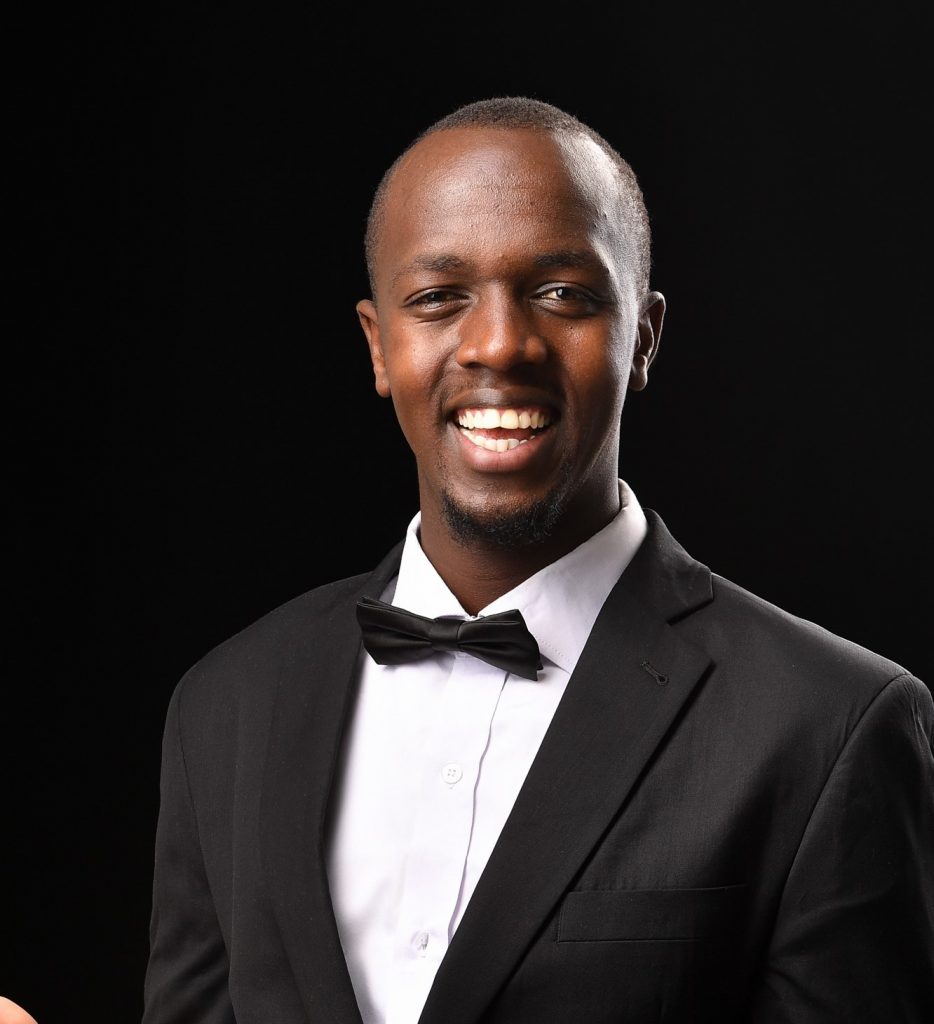Disclaimer:
- In our current society, ‘cult’ is a derogatory term. Nonetheless, I use the word in my examples because these incidents have run their course and we have seen the devastation they left in their wake. However, not every religious movement that is starting is a cult – do not go labelling them as such. The more appropriate term is New Religious Movements.
- In this article, I use the Christian faith to illustrate different points – not because it is different, inferior or superior to any other faith professed in the world but because, as a Christian, it is the faith I understand most.

For a while, I did not pay attention to the news partly because it was almost always bad news about the economy and our government. But at that time, a big story – the Shakahola murders – broke and I missed it.
A few days later, my brother wanted to discuss it with me and I wasn’t even aware of the incident. He summarised it to me – people were starving themselves to death, as instructed by their leader/pastor, so that they would see Jesus.
My first reaction was surprise. How could people be so gullible? How could they not see through the charade? Surely, with a little critical thinking, anybody could see through the deception.
But after sitting with the story for a few days and pondering on what might have led to such an occurrence, I started seeing things a little differently.
The victims of Shakahola were not stupid or dumb or gullible, they were human. What made them commit to their belief is what makes us commit to any beliefs we hold. And in the right circumstances, I could also be a victim.
Let me show you why all of us, even the most intelligent, could be victims of such extremism as we revisit history.
But before that, here is the Shakahola Massacre in a snapshot.
The Shakahola Massacre
At the writing of this article, the Shakahola Massacre is an ongoing investigation. Bodies are still being exhumed with the current tally standing at 251 bodies. Most of the exhumed bodies according to the government pathologist, Johansen Oduor, died from starvation although some show signs of murder through asphyxiation and blunt force trauma. But how did it all happen?
It all started in 2002 when Paul Makenzi, a taxi driver, joined forces with Ruth Kahindi to establish Good News International Church. In the beginning, it was a normal evangelical church. But after some time, Makenzi started leaning heavily on the apocalyptic message of the book of Revelation in the Bible.
His insistence on preaching about the end times and claims of church money misappropriation caused a rift between the two founders of the church. Makenzi went his own way and doubled down on his message. He grew his following to hundreds, with his influence growing even more when he established his television station, Times TV, taking his popularity to a different level.
In 2019, he closed down his church and moved into the Shakahola forest. He encouraged his followers to go with him, branding it as the move to the “new holy land”. When 2020 came about and the pandemic hit, he used this as proof of what he had been preaching – the end of the world. His now cultish following believed him.
Later, in March 2023, he claimed that God had spoken to him and told him that his work was now coming to an end. To “complete his work”, he divided up the hundreds of people who had followed him into villages and started his fasting campaign. Since the end times were here, he told his followers to make the ultimate sacrifice and starve themselves to death in order to see Christ.
The operation started with the starvation of the children, then the women would follow, and then the men. Finally after all had “successfully transitioned into heaven”, Makenzi would be the last to starve himself to death.
And that is why we have 251 bodies and hundreds more missing.
The making of a cult
When you hear of a cult, what comes to mind?
Initially, when the word started being used, it never referred to a backwards-thinking group of people with weird, sometimes dangerous, beliefs. The word meant a particular system of worship. It shares the same origin as the word cultivate. Drawing from what the word has evolved to represent, there is a lot of cultivation of members in a given cult.
It is often said, give a cult enough time and it will become a religion – which makes sense considering the most popular religion in Kenya, Christianity, started as a cult.
Think of the early days of the Christian ministry just after Jesus died and ascended into heaven, when the disciples were locked in a room praying and waiting for the promised helper. And on the day of Pentecost, when they were speaking in different tongues. From the outside looking in, it seemed like a cult.
Afterwards, when they received the holy spirit, they got the courage to go out and preach the gospel. But for the first few centuries, spreading Christianity was not easy. Most of the early believers were persecuted and killed. Now, 2000 years later, with over 2 billion adherents, it is the most powerful religion in the world.
This brings us to our first moment of vulnerability. If you live by any religious beliefs, which were likely considered a cult at some point, you can take up other beliefs, including those that lead to detrimental cultish behaviour.
The Shakahola victims were Christians. They believed they were going to see Jesus Christ. All Christians believe that they will see Jesus Christ when the day of judgment comes. What was different about Shakahola is that their path to seeing Jesus was twisted.
Let me jog your mind a little, do you remember the Mama Rosa resurrection story? A different Christian-believing church claimed that one of its members had resurrected. In 2010, a church in Nakuru camped for an entire week praying for the resurrection of two of their pastors who had died in a road accident. A few years ago, we had the Kanyari scandal, where the pastor was performing fake miracles.
And the list goes on and on. There is no shortage of such stories within the Christian faith.
In the churches we go to, there are beliefs we hold that are different from the church next door. I am Catholic, and as much as I am a Christian, my beliefs vary from those of the protestants to some extent.
The fact that we have grouped ourselves into these Christian religious sects shows that we are as vulnerable as those who got caught up in Shakahola and other cults/religious-related murders and suicides.
Shakahola is not an isolated case
There have been other instances of mass murders and mass suicide because of religious cultish beliefs. Here are three examples from around the world that stand out over history. Understanding the three examples will help us understand better why people get caught up in such schemes and how we can protect ourselves from such extremities.
The People’s Temple
In 1998, Kenya experienced one of the worst terrorist attacks. The United States of America Embassy was bombed and 200 people lost their lives. Three years later, the World Trade Centre in America was hit and the number of deaths was ten times more than that of the Embassy in Kenya. Those were tragic deaths. However, prior to the World Trade Centre attack, can you guess what event claimed the most lives at once in America?
It was the Guyana mass murders and suicide – a result of a religious belief just like the deaths in Shakahola.
In 1954, Jim Jones started a new religious organisation. His teachings were a mix of Christianity, Communism, and Socialism ideologies. He accumulated a significant following over the years. In 1965, he moved his church from Indiana to California and he migrated with his followers to a new utopian settlement – the haven for Jim Jones believers.
In 1978, there was scrutiny of the People’s church and what happened in Jonestown (as the settlement was dubbed). On the 17th of November in the same year, Leo Ryan, a representative of the government, went into the town to investigate allegations of abuse. As he was leaving, some members of the group wanted to leave with him. The security (People’s Church security) intercepted and opened fire on them, killing the government representative, three journalists and one defector.
Later in the day, Jones ordered his congregation of over 900 people to take a concoction laced with cyanide. Those who refused were forcefully injected with cyanide. In the end, 918 people died including, 278 children.
The Kanungu murders
While approaching the turn of the millennia, some people believed that the world would come to an end on 31st December 1999. The Movement for the Restoration of the Ten Commandments of God was a religious movement in Uganda that believed this too.
Started by a defecting priest of the Roman Catholic church, the movement’s leadership included other defecting catholic clergy, nuns and priests.
The movement emphasised to its members the importance of keeping the ten commandments in order to see paradise after the predicted apocalypse. The followers were adamant about the commandments and some even stopped talking, deciding to use sign language so as not to bear any false witness. Sex was forbidden as well as soap. They were also encouraged to fast and on Fridays, they only had one meal.
Towards the predicted doomsday, the congregants were encouraged to sell their possessions and hand over the proceeds to the church, which most of them did. However, when 1st January 2000 came, nothing happened. The church started to unravel and people started demanding their money back. This prompted the church leadership to predict another apocalypse date, 17th March 2000.
The day was meant to be a day of celebration as the apocalypse came. Hence, the members gathered at Kanungu for the final feast. Once the festivities started in the church, the church went up in flames. The windows and doors were sealed off so no one could escape. 530 people lost their lives.
Upon investigations, more bodies were discovered buried in the compounds of the church leaders. 395 bodies were found having been poisoned and stabbed. The church leadership escaped and their whereabouts remain unknown.
Heaven’s Gate suicides
In 1974, Bonnie Nettles and Marshall Applewhite founded Heaven’s Gate in the United States of America. Their teachings were a mix of Christianity and Ufology (the belief in Unidentified Flying Objects – UFOs). They believed that they could transcend humanity and be taken to the “Next Level” of life by an alien UFO.
This belief was challenged when Bonnie Nettles died of cancer. The teachings were then adjusted and now, one did not have to go to the “Next Level” in the body. Rather, it is the consciousness that would be graduated.
In 1995, the Comet Halle Bopp was discovered. The Comet was one of the brightest Comets to have been observed. It was visible to the naked eye for a period of 18 months. It was visible throughout 1997.
Since the congregants of Heaven’s Gate believed in Ufology, the coming of this comet convinced them that the apocalypse was due.
39 members including the remaining founder, Applewhite, were found having committed mass suicide in a house in San Diego, USA. They had updated their website with a message to indicate that their rapture had come with the coming of the comet.
The differences between cults and religious groups
Cults do bear a resemblance to religious groups. But to understand the nuance, we need to understand the characteristics of a cult.
- Cults display an unquestioning commitment to their leader and regard his belief system, ideology and practices as the truth or law.
This statement describes the Christian faith. The leader is Jesus Christ, unquestionably, as he said in the Bible that He is the way, the truth and the light. However, Jesus did not kill or order the killing of his disciples and followers when cornered as Jim Jones did with the People’s Temple Massacre. Jesus did not lock his followers in a church and set it on fire like the Kanungu Murders. Where Jesus went, he preached love as opposed to leaving mass graves behind.
That is the difference between an established religion and a cult where the belief in the leader is for the benefit of the leader – the ideology and practices serve the leader's selfish interest.

At Shakahola, Pastor Makenzi encouraged people to sell their property and donate the proceeds to the church since they wouldn’t need them in the next life. The same thing happened in Uganda with The Movement for the Restoration of the Ten Commandments of God.
Pastor Makenzi was set to kill himself after everybody else died and the whereabouts of the perpetrators of the Kanungu murders are not known to this day.
- Questioning, doubt and dissent are discouraged or even punished.
All religious groups practise this to an extent. If you question the religion to which you belong, your faith is called to question instead. Developed religions are a little lenient with questioning and dissent because they already have a big enough following. However, starting religious groups do not entertain doubt as it threatens their existence and every member counts at that point.
- Mind-altering practices such as meditation, chanting, speaking in tongues, denunciation sessions, or debilitating work routines are used as tools of worship.
These practices are used across the board in any religious group. Protestants emphasise praying in tongues. Catholics chant prayers as they pray the rosary. Muslims chant their prayers as well. Eastern religions use a lot of meditation in their religious services.
However, many cults have the same practices. A secret ceremony of a cult that existed in 1990 known as The Order of the Solar Temple was recorded and you can hear the ceremony is marked by chants all through. A fact about the cult, in 1994, 53 of its members were found murdered in four different places mysteriously.
- The group has a polarised ‘us vs them’ mentality, which might bring conflict.
In the early days of Christianity, the ‘us vs them’ mentality led to the many deaths that occurred during the Christian crusades. Interestingly, different churches call their street services crusades.
For you to belong to one religion, you cannot belong to another group. There is nothing wrong with belonging to different camps with others. However, if that leads to conflict and harm to the members, then definitely, that crosses the line.
One way that this manifests in a cult is when members are encouraged to cut ties with family and friends and even move to live with members of the religious group exclusively. This happened in Shakahola as well as in Jonestown. It has also been seen in other cultish groups not included in the article whose end was just as tragic as the examples given here.
- The leader is not accountable to any authorities
This should be the defining point in differentiating between a credible religious group and a cult that might lead to calamity.
Mature religious groups have structures and systems in place to check against extremism. In fact, these religious groups tend to be very conservative in order to preserve their credibility and accountability.
However, you need to pay attention to defecting groups such as The Movement for the Restoration of the Ten Commandments which led to the Kanungu Murders.
In a splinter group of Seventh Day Adventists in 1993, also said to be a cult, America saw a standoff between the FBI and them which led to 76 people being killed. Some argued that the deaths were a mass suicide to avoid arrests by the authorities.
However, not all cults are splinter groups and not all splinter groups are cults.
There are also other religious groups that started without a robust system in place. The way to differentiate them from the detrimental ones is, as the group grows, does the leader hoard power and control to themselves, or do they democratise it? If they hoard it, that is a red flag.
Why you could also be a victim
History shows that cults thrive in times of upheaval and instability, as from the examples above. And taking into consideration the state of the world economy and the hardships that people are going through, this is the perfect environment for predatory cults to spring.
Therefore, pay attention to the groups that you become part of. Keep in mind, cults are not only religious in nature, they can be political, they can be lifestyle related, and around anything that can bring people together.
Remember, nobody joins a cult, or at least a predatory cult, to hurt or kill themselves. They all join a group that promises something that they need, be it a sense of belonging, a better life or health. Whatever it is, people join a group, church or religion to get something they are missing in life.
It is only after they join that they are manipulated and find themselves in too deep to turn back. Some are manipulated into believing that they cannot do without the group or outside the group.
Mark you, the indoctrination does not happen overnight. It might even take decades. Pastor Makenzi started preaching in 2002 and it is only 20 years later that we get to see the damage caused by his preaching.
My hope is that all through the complex, intrusive and uncomfortable piece, I have managed to show you that you are not any different from the victims of occurrences such as the Shakahola mass murder. In fact, if you believe in any form of religion, you are a step closer to radicalisation. But that is not to scare you. It is only meant to make you aware and take stock of where you stand.





